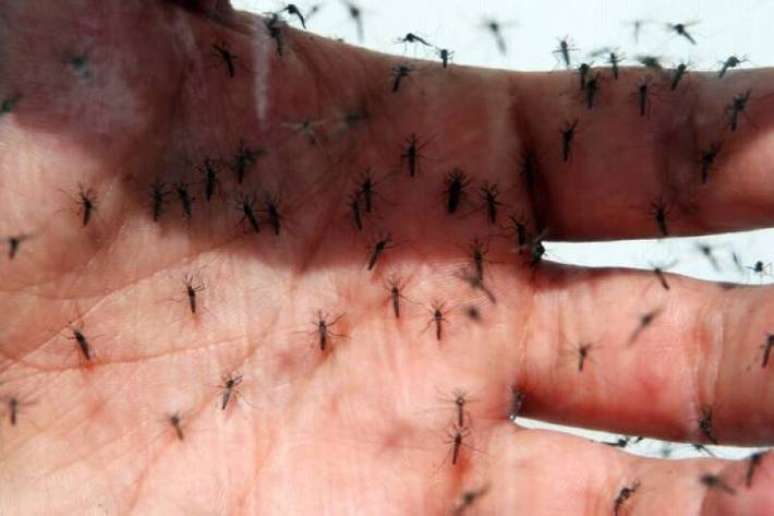The American regulatory agency has authorized its use for people over the age of 18; the immunizer was developed by Butantan in collaboration with a French-Austrian company
Since Thursday the 9th, the world has had a chikungunya vaccine. The immunizer, called Ixchiqit was developed collaboratively by the Butantan Institute, a body linked to the Department of Health of the State of Sao Paulo, and the French-Austrian biotechnology company Valneva and approved for administration to people over the age of 18 in the United States.
This was decided by the Food and Drug Administration (FDA), the regulatory agency responsible for authorizing the use of medicines in the country, which granted approval to Valneva Austria GmbH, taking into account the American data from the phase clinical study 3 published in June in the magazine The Lancet, which demonstrated that the vaccine was safe for adults and induced antibodies in 98.9% of research participants. Chikungunya has no specific treatment.
10 exercises and habits that improve cardiovascular health
In Brazil the vaccine has not yet been released. Butantan will have to submit the request for approval to the National Health Surveillance Agency (Anvisa) in the first half of 2024. Butantan is also conducting a phase 3 study in Brazil, a region where the virus is transmitted, this time in adolescents. The result is expected to be published in the coming months and could support the vaccine recommendation for this age group as well.

“This is great news for everyone. We are getting closer to offering a vaccine against chikungunya to the population. Butantan is very proud to actively participate in this development process,” says the director of the Butantan Institute, Esper Kallás.
“Chikungunya virus infection can cause long-term health problems, especially in older adults and individuals with underlying health conditions,” said Peter Marks, director of the FDA’s Center for Biological Evaluation and Research. “The approval fills a medical need and represents an important step forward in preventing a potentially debilitating disease with limited treatment options.”
According to the FDA, the vaccine is administered in a single dose by injection into the muscle. It contains a live, weakened version of the chikungunya virus and can cause symptoms similar to those experienced by people with the disease.
The effectiveness of Ixchiq is based on a clinical study conducted in the United States in individuals aged 18 years and older. The immune response of 266 participants who received the vaccine was compared to the immune response of 96 participants who received a placebo. The immunizer induced the production of neutralizing antibodies in 98.9% of participants. Six months after vaccination, protection was still maintained in 96.3% of the volunteers.
The safety of Ixchiq was evaluated in two clinical trials conducted in North America, in which approximately 3,500 participants aged 18 years and older received one dose of the vaccine; another approximately 1,000 participants received a placebo.
The most common side effects were headache, fatigue, muscle pain, joint pain, fever, nausea, and tenderness at the injection site. Serious chikungunya-like adverse reactions that prevented daily activity and/or required medical intervention occurred in 1.6% of subjects treated with Ixchiq. Two vaccinated people had to be hospitalized.
Some recipients have had adverse reactions for more than 30 days. The prescribing information includes a warning that the vaccine may cause severe or prolonged adverse reactions similar to chikungunya.
The FDA instructed the manufacturers to conduct a post-marketing study to evaluate the risk of serious chikungunya-like adverse reactions among vaccinated individuals.
In Brazil
The vaccine is being tested in Brazil on 750 Brazilian adolescents aged between 12 and 17 living in endemic areas in the cities of São Paulo, São José do Rio Preto, Salvador, Fortaleza, Belo Horizonte, Recife, Manaus, Campo Grande, Boa Vista and Laranjeiras-SE.
Chikungunya is a viral disease transmitted by mosquitoes Aedes aegizi AND Aedes albopictus. Some cases may be asymptomatic and others may cause fever above 38.5°C and severe pain in the joints of the feet and hands, as well as headaches, muscle pain and red spots on the skin.
The consequences left by chikungunya, especially severe joint pain, can become chronic and last for years. “Many of these cases occur among young people, who can no longer work. So this arbovirus ends up having consequences not only on health, but also on the economy”, underlines the medical director of Butantan, Fernanda Boulos.
According to the World Health Organization (WHO), the chikungunya virus has already been identified in 110 countries in Asia, Africa, Europe and the Americas. In Brazil, cases increased 78% from 2021 to 2022.
Currently the main form of prevention is the fight against mosquitoes that transmit the disease, as in the case of dengue. This includes frequent emptying and cleaning of standing water containers, such as plant pots, buckets, tires, plastic bottles, unused and unmaintained swimming pools, as well as proper waste disposal.
Source: Terra
Ben Stock is a lifestyle journalist and author at Gossipify. He writes about topics such as health, wellness, travel, food and home decor. He provides practical advice and inspiration to improve well-being, keeps readers up to date with latest lifestyle news and trends, known for his engaging writing style, in-depth analysis and unique perspectives.








